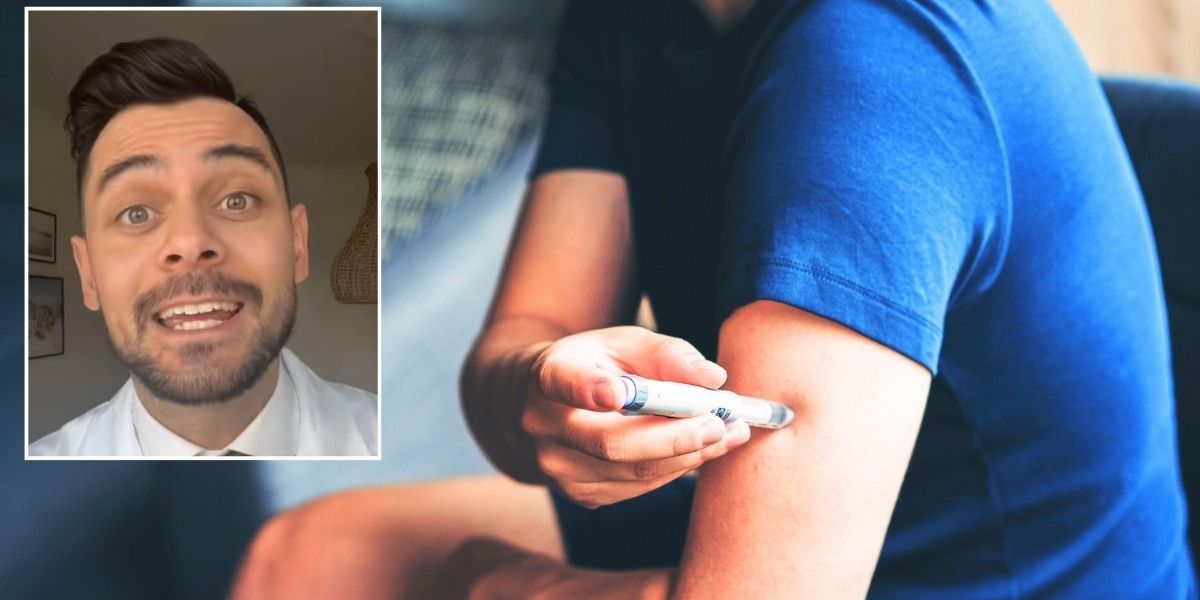There are several risk factors for Type 2 diabetes, including being overweight or obese, holding excess fat around the liver or pancreas, high blood pressure, age, ethnicity and family history.
While some of these are outside of our control, others are totally manageable.
A dietician took to TikTok with some important information for anyone at risk of pre-diabetes or Type 2 diabetes.
To stave off these health issues, Joe (who goes by @dietvsdisease on the sharing platform) advised people to limit their intake of fruit juice.
‘The sugar in fruit juice is concentrated when you drink it’
GETTY IMAGES
He explained: “The sugar in fruit juice is concentrated when you drink it. You end up drinking five to 10 times more fruit than you could ever possibly eat.
“Fruit should really be consumed in its whole form – it still has fibre and it’s much lower in sugar. Juice should be for vacations and special occasions, not an everyday thing.”
What’s more, fruit juices often contain added sugar, which means more calories and an increased likelihood of weight gain.
If you are drinking fruit juice on occasion, going for 100 per cent options may be your best bet. An article entitled ‘Intake of Fruit Juice and Incidence of Type 2 Diabetes: A Systematic Review and Meta-Analysis’, published in the National Library of Medicine, identified a key difference between sugar-sweetened fruit juice and 100 per cent fruit juice.
The study found that “a higher intake of sugar-sweetened fruit juice was significantly associated with risk of type 2 diabetes, while intake of 100 per cent fruit juice was not associated with risk of developing type 2 diabetes”.
Researchers concluded: “Our findings support dietary recommendations to limit sugar-sweetened beverages, such as fruit juice with added sugar, to prevent the development of type 2 diabetes.”
The experts at Diabetes UK confirmed that fruit juice is something to be wary of if you have the disease.
They stated: “All fruit, fruit juices and smoothies contain a naturally occurring sugar called fructose. Fructose from whole fruit doesn’t add to your intake of free (or added) sugar, but in fruit juice or a smoothie, it does.
“Free (added) sugar includes the sugars added to foods by manufacturers, e.g. in cakes, chocolates, jam, some pasta sauces, fizzy drinks and breakfast cereals. It also includes the sugar found in fruit juices, smoothies and honey.
LATEST DEVELOPMENTS
‘Fruit should really be consumed in its whole form – it still has fibre and it’s much lower in sugar’
PA IMAGES
“Eating too much free (added) sugar contributes towards obesity and tooth decay, and also puts people at risk of type 2 diabetes.
“The best thing you can do is to get label-savvy so that you are aware of all the hidden free (added) sugars in the foods that you buy. Aim to cut down where you can. You can control the amount of sugar you use if you cook food yourself.”
In addition to fruit juices, dietician Joe advised cutting out soft drinks, branding them a “no go” due to their sugar content.
Making diet changes can also make a big difference. A dietician who helps patients reverse their high blood sugar levels shared the kitchen ingredients to “lower blood sugar acutely”.
